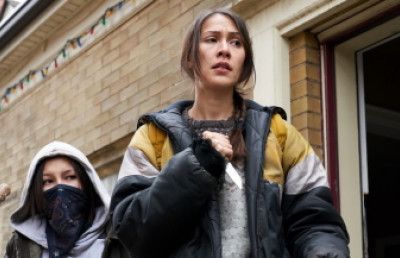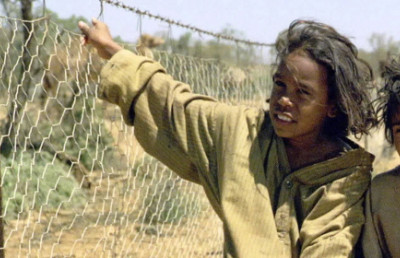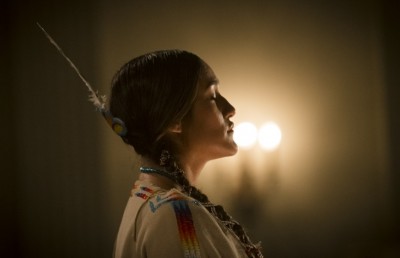The Reclamation of Culture: Smoke Signals and Skins by Chris Eyre
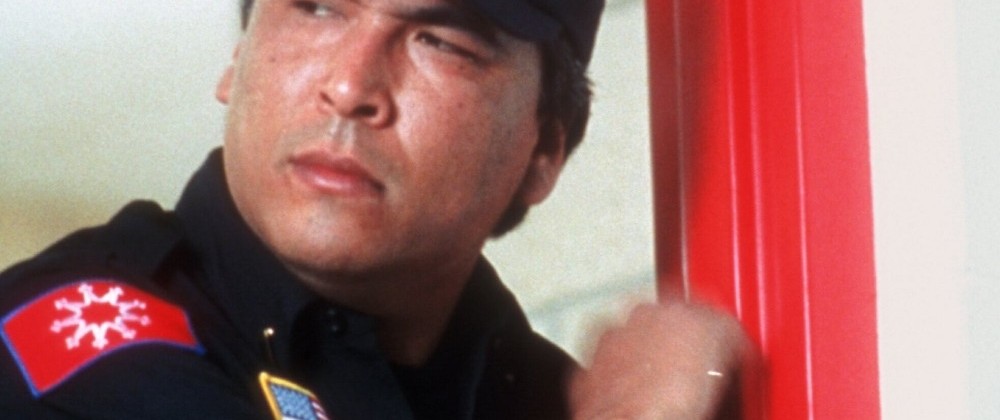
“But why should I, a Huron of the woods, tell a wise people their own traditions? Why remind them of their injuries; their ancient greatness; their deeds; their glory; their happiness—their losses; their defeats; their misery? Is there not one among them who has seen it all, and who knows it to be true?”
—Magua, Chapter 29, The Last of the Mohicans
“The white race is the cancer of human history; it is the white race and it alone—its ideologies and inventions—which eradicates autonomous civilizations wherever it spreads, which has upset the ecological balance of the planet, which now threatens the very existence of life itself.”
—Susan Sontag, “What’s Happening in America,” Styles of Radical Will
Native Americans are friends and strangers, sons and daughters, brothers and sisters, mothers, fathers, uncles, aunts, grandparents, human beings all: absolutely, deeply, essentially, profoundly, thoroughly. Citizens, laborers, artists, thinkers. The work of Native American filmmakers such as Chris Eyre, Sandra Osawa, and Randy Redroad contests a tradition of interpretation that diminishes and even erases Native American agency, culture, and political struggle. Some of that diminishment has occurred in literature and film. James Fenimore Cooper’s fiction The Last of the Mohicans is set during the French and Indian War (1754 – 1763), in which the Iroquois and the French fought British colonists, and it has been cited as a contribution to stereotype. Yet, the book was part of a genuine American literature, one that recognized the unique attributes of a different world and went beyond imitation of the European works that came before it. The literary artist and social critic James Fenimore Cooper (1789 – 1851) was the son of William Cooper, the founder of New York’s Cooperstown and a Federalist legislator, and a New Jersey Quaker mother; and he was expelled from Yale, and became a sailor and farmer, and the author of The Pioneers (1823), The Last of the Mohicans (1826), The Prairie (1827), The Pathfinder (1840), and The Deerslayer (1841), novels of frontier life known as the Leatherstocking Tales. Cooper wrote more than forty books, and included as his subjects the American Revolution and the European middle ages, but his tales of early Americans making their way amid forest and prairie made and maintained his reputation. The Last of the Mohicans is a tale of an emerging society in a state of contestation, yet articulated as adventure and romance. The novel depicts the interactions of European colonists and Native Americans, exploring the contrasting and conflicting cultures and the destructive consequences of settler expansion while suggesting the possibility of reconciliation—in characters such as Mohican Chingachgook and his sons Uncas and (the adopted English male) Natty Bumppo. There are contentions between colonists and natives, but also among colonists, and among natives.
In the world of The Last of the Mohicans, the British and French fight each other for territory—that once was the sole province of the natives. The hostility between the Mohawk and the Huron is part of the book’s story; and the Mohawk are part of the Iroquois league, along with the Oneida, Onondaga, Cayuga, and Seneca tribes, as well as the Tuscarora. Cooper’s Mohicans are considered an amalgam of Algonquin tribes, the Hudson River Valley Mahicans and the Connecticut Thames River Mohegans, although the novel describes them as being of Delaware. Chingachgook and Uncas are all that is left of the Mohican tribe; and they work and travel with Natty Bumppo, a British scout, also known as Hawkeye, the Deerslayer, and the Long Rifle. (Hawkeye, despite his familial friendships, resists interracial sexual relations.) Uncas, known also as the Bounding Elk, is very brave and sometimes shows more skill in the wilderness than Hawkeye, and Uncas, a more spiritual man, is more open to experience, to people—to love. The three men help a traveling party, including two sisters Cora and Alice Munro, that has been attacked by Huron Indians (led by Chief Magua, called the Wily Fox, who is attracted to Cora, partly as an opportunity to humiliate her father Colonel Munro, by making her his mate); and Hawkeye and his friends bring the young women to their father, Colonel Munro, the besieged commander of Fort William Henry. There is affection between Uncas and Cora, whose mother has West Indian (black) heritage—but the two do not come to a happy fate. Cora, like Uncas, like Natty, might be considered an embodiment of complexity, and/or a living reconciliation of people in conflict.
The Last of the Mohicans is adventure, and history, even a frontier tale, or a western, if one accepts that in its time the frontier, or the west, was still all of the continent. Richard Slotkin wrote about the heroism and horror of that time in Regeneration Through Violence: The Mythology of the American Frontier, 1600 – 1860 (Wesleyan University Press, 1973). The fantasy of dignified, industrious people surviving wilderness and willful opposition was the vision of powerful communicators and an attentive audience, something discussed by Christine Bold in her book The Frontier Club: Popular Westerns and Cultural Power, 1800-1924 (Oxford University Press, 2013). The classic westerns of cinema focused on the conquering of the American west, 1865 through 1890, beginning with such films as Edwin S. Porter’s Great Train Robbery (1903) and Cecil B. DeMille’s The Squaw Man (1913), and continuing with distinguished works by John Ford, George Stevens, Fred Zinnemann, and others, although some have been lamented for the predictability of their mythology and morality. André Bazin (What Is Cinema?) in “Evolution of the Western” (1955) considered westerns, with their forbidding terrain and sustained observations, as articulations of America’s founding and civilization. Of course, one can argue that all of that was impossible to miss—but it was missed for so long because it was all so easily and deeply accepted. James Fenimore Cooper anticipated much with The Last of the Mohicans. Michael Mann’s film adaptation of Cooper’s The Last of the Mohicans, a $35 million production shot in less than a month in the Blue Ridge Mountains of North Carolina, partly informed by the diary of French explorer Louis-Antoine de Bougainville and other historical sources, is a story of the American colonies, and a class of cultures, an intelligent and vital film, featuring Daniel Day-Lewis as Hawkeye, the English orphan raised by the Mohicans and who prefers wilderness to settlement life, with Russell Means as Chingachgook, Eric Schweig as Uncas, Madeleine Stowe as Cora, and Jodhi May as Alice.
Newsweek’s David Ansen, reviewing Mann’s Last of the Mohicans, says Cooper’s novel is “where the Native Americans are either sentimental noble savages or bloodthirsty demons,” so leaving some of its details behind is all to the good; and Ansen marvels at actor Daniel Day-Lewis’s incarnation of Hawkeye, stating, “This amazingly graceful actor builds his character out of body language—it’s in his quick, stealthy gait, his cautious grin, the way he loads a flintlock rifle. He turns this 18th-century action hero into a freshly imagined romantic icon” (September 27, 1992). Hawkeye returns the sisters Cora and Alice, with Major Heyward (Steve Waddington) who is fond of Cora, to Colonel Munro (Maurice Roeves) at Fort William Henry.
The script suggests a growing affection not between Uncas and Cora but between Hawkeye and Cora, and, of course, there is no indication that Cora has a mixed-race heritage: “Stowe’s proud, pearly elegance—she’s like an ivory cameo come to excited life,” notes David Ansen. Alice and Uncas seem to have a flirtation. Magua (Wes Studi) scouts for the English, but resents them, while spying for the French and planning to hurt Colonel Munro and his daughters to avenge the loss of his own family (the death of his children, the remarriage of his wife). When Hawkeye (Day-Lewis) warns the fort’s soldiers that they should leave to protect their own families, the colonel arrests him and his daughter Cora visits the jailed Hawkeye. The French and Indian war “creates a myriad of conflicts—military, personal, tribal and romantic,” observes Washington Post reviewer Desson Howe (September 25, 1992), finding the film “the MTV version of gothic romance, a glam opera of rugged, pretty people from long ago.” That sounds a little cynical—as if all films set in history should seem like museum pieces, quiet and somber, every human impulse tamed. Mann’s film has great vitality—of course, sometimes charm is more dangerous than contempt.
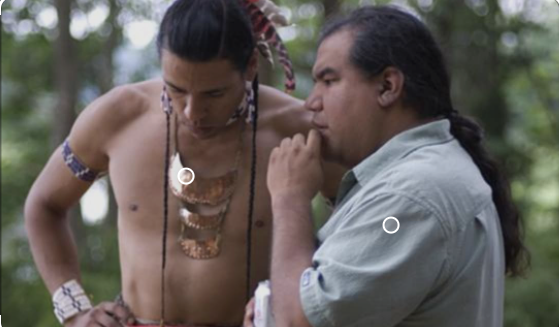
Skins, the motion picture directed by Chris Eyre (Smoke Signals), about two very different middle-age Oglala Sioux brothers, and written by Jennifer D. Lyne based on Adrian Louis’s 1995 novel, was shot over 23 days on the Pine Ridge Indian Reservation (with the crew staying an hour away). Smoke Signals, Eyre’s 1998 film based on Spokane-Coeur d’Alene-Native American novelist and poet Sherman Alexie’s collection of interlinked stories The Long Ranger and Tonto Fistfight in Heaven (1993), about two friends, Thomas Builds-the-Fire (Evan Adams) and Victor (Adam Beach), on a journey from a Native reservation in Idaho to Arizona to retrieve the ashes of Victor’s father, offers surprising pleasures. Skins offers more sorrow. It does not have the romance of frontier tales. Skins, which draws on different genres as it grapples with difficult realities—communal decay and family trouble—blends comedy and tragedy; and it opens with documentary footage identifying some of the history, poverty, and politics of the reservation: the alcohol abuse, food stamps, and arrests that sometime mark the lives of the people there. The presence of a responsible brother and of an irresponsible one—like that of a noble primitive and an ignoble one—may suggest personal and cultural range as well as dramatic conflict. One of the lead characters is a Native American (tribal) policeman, Rudy Yellow Lodge (Eric Schweig), and we see him wearing a mask and washing his face of it. The mask suggests hidden motive—that here is a man of contradictions, someone who works within the law and sometimes outside of it. There, nearby, is a spider—which Rudy sees: spiders are trickster figures for some Native Americans, sometimes funny, sometimes violent; a figure of inappropriate behavior in cautionary tales. Both Rudy and his brother Mogie Yellow Lodge are tricksters: Mogie (Graham Greene) is full of mockery, and thus is more easily recognized, but Rudy’s actions, so divergent from his public face and responsibilities, make him one too.
Rudy (Eric Schweig) patrols the reservation, looking for public disturbances, looking for criminal activity, but he helps, also, to take care of his brother Mogie and his nephew Herbie. Rudy visits a Sioux shopping center, where he shops for food, some of which he brings to his brother’s shabby house. Mogie (Graham Greene), like Rudy, was once a local football star; and Mogie went to Vietnam, where he performed excellent service for his country, but was damaged. Rudy (Schweig) gives his brother Mogie (Greene) money, though he knows Mogie will spend it on drink. No alcohol is sold on the reservation, and people, like Mogie, go to a nearby town to buy liquor.
Rudy, while performing his rounds receives dispatches, and while following up on one report, enters an abandoned house, and finds there a dead young man, but the apparent assailants escape. Rudy hits his head. Is he injured? Rudy, reporting to the Pine Ridge police department, finds out the dead man had holes kicked into his lungs. Rudy, looking for clues, visits the abandoned house again, and sees where the dead body had lain, and where Rudy hit his head. Was Rudy shaken, transformed, by the blow?
Rudy’s nephew, Herbie (Noah Watts), visits him; and Rudy (Schweig) gives Herbie money for Mogie (Greene) and for Herbie. Mogie, the former Vietnam soldier, does target practice—he is crazed, funny. Mogie goes to a policemen’s picnic with Rudy, who appreciates being one of the guys; and Mogie, offended by the assimilation, the shallow fun, trips Rudy while Rudy runs with the ball, and the two brothers argue. Rudy has an attack; and Mogie and Rudy’s girlfriend are concerned—Rudy, at the hospital, gets medicine. Rudy and his (married) girlfriend, Stella (Michelle Thrush), talk about Mogie’s brave war record (Mogie says his three Purple Heart medals are idiot awards).
Skins, like Smoke Signals and other films by Native Americans, attempts to show us public and private realities we do not know. Chris Eyre, who was born in Oregon and reared in Klamath Falls by adoptive parents, is an enrolled member of Cheyenne and Arapaho tribes; and Eyre graduated with a media arts degree from the University of Arizona, and made his first film about a child’s search for his birth mother, mirroring his own, Things Learned Young (1991) before studying at the New York University Tisch School, where he made Tenacity (1994), which was shown at Sundance in 1995. Chris Eyre has wanted to go beyond the received ideas and images, wanted to present Native Americans in all their dimensions. The old forms are inadequate to his ambitions. Smoke Signals and Skins were passion projects, born of a determination to explore the contemporary Native American world. “There’s something called Japanese cinema, African cinema, Italian cinema, but we have yet to realize what Native American cinema is,” filmmaker Chris Eyre, a man of spirit and vision, told Gale Courey Toensing of Indian Country Today (January 4, 2011). How is a complicated reality, one often diminished or even erased, to be represented? Chris Eyre, with Skins cinematographer Stephen Kazierski and editor Paul Trejo, focused on recognizable aspects of life: impulses, incidents, interiors. We see buildings and fields and roads that look worn by time and use. We see public policy and private pain. Yet, a reviewer for Variety, David Rooney, thought the narrative strategies were irreconciled, if not incompatible, in Skins, but declared, “The delicately rendered story’s warm characterizations, gentle humor and spiritual undertones make it an affecting portrait of a wounded people that should find responsive audiences on cable after a modest theatrical run” (January 27, 2002).
Skins was built on firm, if disputed, territory: the facts of Native American life, and the fiction (the 1995 novel Skins) of Adrian C. Louis, a member of the Lovelock Paiute tribe and teacher at the Oglala Lakota College on the Pine Ridge Indian Reservation in South Dakota, and an editor, a journalist, and a published poet with more than ten collections to his name as well as author of a book of short stories, Wild Indians & Other Creatures (1996). The Pine Ridge Reservation, created in 1889 (first as a prisoners of war camp), is one of the better-known Native communities, a place of pride and poverty. (The film uses the name Beaver Creek Indian Reservation.) In Skins, Rudy’s house is nice—it is an emblem of his respectable life. Rudy has gone beyond the worst aspects of his childhood. Rudy (Eric Schweig) remembers his drunken, disrespectful father attacking the boys’ mother at a football game. What could be further from such a father than being a man of the law? (What are the limits of the law?) Rudy, later, sees two belligerent young men in a restaurant; and Rudy thinks they may have attacked the young man in the abandoned house—may be the killers. Rudy tracks them. The two young men, subsequently, drink near a fire outside, talking, revealing their guilt, with Rudy observing. Rudy puts on his face black grease, and a stocking mask, and he picks up a bat and attacks them, hitting their knees. Later, Rudy, as a policeman, has to take official statements in the hospital from the injured young men, who do not recognize Rudy as their attacker. Rudy fears he may be inhabited by a disturbed and disturbing spirit. Rudy visits a young medicine man, who discusses with him how the spirit comes in different forms, animate or inanimate. (Has Rudy been affected by the spider or the rock?)
“Where Eyre’s debut film, Smoke Signals, favored communal warmth and lovely landscapes, there’s no majesty to the desert scrub lands defined by dust, desolation and the Third World poverty of the Oglala Sioux community tearing itself apart. He shoots with an almost colorless look and images that emphasize emptiness and isolation,” wrote Sean Axmander in the Seattle Post-Intelligencer (September 26, 2002). Desolation? Much of American life is built on a dream—a principle or project that one alone or with others works toward in a paradisiac land—that denies or disguises the brute facts of life or the state of the nation, but Chris Eyre looks at those facts with appraising and appreciative eyes. Eyre’s work—whether Skins or Smoke Signals, Edge of America (2003), A Thief of Time (2004), A Thousand Roads (2005), or in a seven-hour collaborative documentary of Native history, We Shall Remain (2009), which ranges from the 17th through 20th century, and which directors Ric Burns and Stanley Nelson Jr. contributed to, with Benjamin Bratt narrating—has been a corrective to a corrosive tradition. Many of the early stories of Native Americans, those of the 1500s and 1600s, told by colonists of Turtle Island, of what would become America, were tales of captivity, in which Natives captured colonists, and colonists captured Natives, allowing for the exploration of actual events and themes of civility and savagery, knowledge, influence, and miscegenation, recalls scholar Angelica Lawson in “Teaching Native American Filmmakers: Osawa, Eyre, and Redroad,” published in Native Americans on Film (University Press of Kentucky, 2018). Frontier tales of the nineteenth century featured both noble and bloodthirsty savages, even in the work of literature that was esteemed, such as James Fenimore Cooper’s Last of the Mohicans (1826). The images and ideas of that literature would influence cinema; and often negative presentations of Natives justified white western expansion (and aggression) in America: “His gluttony makes him sick. God gave him enough, and yet he wants all. Such are the pale-faces,” says Magua in The Last of the Mohicans (Library of America, 1985; page 820).
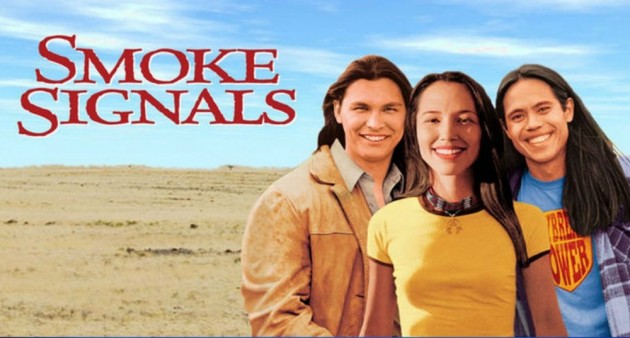
More than 250 Lakota children, women, and men were killed, and 51 wounded, by United States Army soldiers near Wounded Knee Creek on the Pine Ridge Indian Reservation in South Dakota on December 29, 1890. Twenty soldiers were given the Medal of Honor, the nation’s greatest military award. That event is in the book Bury My Heart at Wounded Knee: An Indian History of the American West by Dee Brown (1970), which documented and discussed settler expansion into Indian land, and the last battles of the Native Americans in the nineteenth century to defend their territories. The assaults against Native culture and the theft of indigenous lands remains haunting. Bury My Heart at Wounded Knee is about the betrayals and brutality of the United States government; and it was the basis of a 2007 television film, of the same name, written by Daniel Giat and directed by Yves Simoneau, and starring Adam Beach as Sioux doctor Charles (Ohiyesa) Eastman, with Anna Paquin as a New England reformer and Native school official who becomes the doctor’s wife Elaine Goodale, and Aidan Quinn as the legislator Henry Dawes, who insisted on Indian assimilation, leading to land loss. The brothers in Skins are haunted by such history, but whereas Rudy (Eric Schweig) is attempting to be true to his ideals, Mogie (Graham Greene) cannot forget how betrayed and foolish his ideals seem. “The bitter legacy of Wounded Knee lingers at ostensibly dry Pine Ridge, where unemployment runs high and alcoholism is epidemic, fueled by the four liquor stores of nearby Whiteclay, Neb (population 22), from which Native Americans are said to purchase about 4 million cans of bear a year,” wrote critic Kevin Thomas in his thoughtful commentary on Eyre’s Skins, recalling with discerning respect Eyre’s collaboration with Sherman Alexie in Smoke Signals as well as Alexie’s own The Business of Fancy Dancing (2002), in the December 13, 2002 Los Angeles Times.
There is a news report on alcoholism on and near the reservation in Skins. The liquor stores seem established to exploit the Natives. Rudy (Schweig), as a vigilante, goes out again; and he pours gas and sets fire to a liquor store. He is pleased with what he has done until he sees his brother Mogie is there, on the roof, and endangered by the fire, burning, falling. Mogie, later, lays burnt, in the hospital. Rudy recognizes how his own lawless actions, although taken in righteous anger, have harmed those Rudy meant to help. He, again, visits the medicine man, and then goes to a sweat lodge (water is thrown on rocks for steam). Meanwhile Mogie (Graham Greene), wrapped in gauze, continues his irreverence. The doctor says Mogie has cirrhosis of the liver.
“In his two stars, Eyre has two of the foremost Native American actors. Both Schweig and Greene are actors of strong physical presence. Each has emotional range and intensity that demolish movie stereotypes of Indians as stoics,” wrote Kevin Thomas (Los Angeles Times, December 13, 2002). Graham Greene as Mogie is “pathetic and shrewd, tragic and bitterly funny,” said the San Francisco Chronicle’s reviewer Edward Guthmann (September 27, 2002).
A family meal is held at the home of Rudy’s Aunt Helen’s (Lois Red Elk), who has been taking care of Herbie (Noah Watts), Mogie’s son; and they talk about family and history. Rudy talks about American Horse, an Oglala Lakota chief, and the Wounded Knee troopers, Custer’s old command. American Horse testified at the Wounded Knee trial. Rudy admits to Mogie that he has been, and is, a vigilante—busting knees, starting the liquor store fire. Mogie, at first, thinks the fire was an expression of personal hatred for him; but when Mogie realizes it was political, he wants Rudy to help him blow the nose off the George Washington monument at Mount Rushmore, which was carved out of a location sacred to the Sioux.
Verdell Weasel Tail (Gary Farmer), a friend of Mogie, is caught in a family home bear trap, which was set against thieves; and Mogie wants to kill the homeowner. Mogie drinks more; and Mogie’s son visits while Mogie is having his binge. Mogie tries to present a self-invented sweet treat to his son Herbie (Noah Watts) but Mogie fails and falls. Herbie goes to Rudy for help, and they take Mogie to the hospital. While Rudy leaves the hospital to get supplies, Mogie dies; and there is a well-attended memorial service. Rudy buys red paint for his trip to Mount Rushmore and his attempt to pay respect to his brother by paying disrespect to the men honored there.
(Isn’t it odd that prejudice—regarding class, race, gender, sexuality—is often the point of conviction, of authenticity? Our hatreds define us.)
When Thomas Edison showed his kinetoscope at the 1893 World Fair in Chicago, he featured an ethnographic film, “Hopi Snake Dance,” presenting an interpretation of Native American culture as exotic; and that was a sign of things to come—of presentations outside of Native control. The popular genre of the western film, featuring a strong, solitary hero amid the wilderness or a half-civil settlement, sometimes waging war against a tribe or gang, would appear in different cultures around the world, and give birth to comics, games, radio series and more; but often that genre was built around a Native figure as opponent, as villain—cruel, cunning, outside civilization. Even when the Native American figure was presented as benign—stoic, wise—a certain humanity was denied. “The Hollywood Indian belongs to a fictional group that lacks tribal specificity,” wrote Angelica Lawson, a Northern Arapaho professor of Native American and Indigenous Studies at the University of Colorado, in “Teaching Native American Filmmakers: Osawa, Eyre, and Redroad,” in the 2018 edition of the book Native Americans on Film, from the University Press of Kentucky (page 205). Often a diversity of Native tribes was portrayed by Navajo actors speaking Navajo, no matter the name of the tribe. Angelica Lawson cites certain Hollywood productions, such as Broken Arrow (Delmer Daves, 1950) and Little Big Man (Arthur Penn, 1970): in Broken Arrow, Jimmy Stewart plays Tom Jeffords, a man whose wife is an Indian (Apache) princess, Sonseeahray (“Morningstar”), played by Coloradan actress Debra Paget, a princess who dies, which can be read as a Nobel savage coming to a tragic end (that Tucson men kill her and attack her white husband could suggest the limits of white civilization). In Little Big Man, an old (121 years old) man, Jack Crabb, recounts an unusual personal history of both conflict and community with Natives, a tale of violence, family, humor, sex, commerce, and mistaken identity, including encounters with George Armstrong Custer and Wild Bill Hickok—and scholar Lawson acknowledges that Little Big Man is a revisionist western but one that suggests the doom of the noble Natives.
Yet, Native American filmmakers, like many other Native American artists and writers, want to reclaim the representation of their people, to show that Natives are still present, not vanished, a part of life and progress. Angelica Lawson’s essay explores the history, artistry, and critical interpretation of Sandra Osawa, Chris Eyre, and Randy Redroad, encouraging visual literacy, and offering teaching strategies; and it was published in Native Americans on Film: Conversations, Teaching, and Theory, edited by M. Elise Marubbio and Eric L. Buffalohead, by the University Press of Kentucky, originally in hardcover in 2013, and then paperback in 2018. (Lawson was at the University of Minnesota at the time of the publication of Native Americans on Film.) In discussing Sandra Sunrising Osawa, a Native American (Makah) filmmaker and poet, the creator of Lighting the Seventh Fire (1995) and On and Off the Res with Charlie Hill (1999) and other works in a career of more than thirty years, Angelica Lawson says that Osawa focused on people—artists, activists—doing interesting and important work often without recognition. Sandra Osawa, who grew up on the Makah Reservation in Washington, studied Political Science and English at Lewis & Clark College, and film at the University of California in Los Angeles, and taught at the Clyde Warrior Institute for Native American Studies in Los Angeles, picking up a camera and responding to the paucity of Native imagery in the late 1960s and early 1970s. Osawa’s In the Heart of Big Mountain (1988), which screened on television to acclaim, is about a Navajo family’s move from one place to another, and its sense of great loss. Lighting the Seventh Fire (1995) is an Osawa documentary about contemporary politics, and the conflicts of the Wisconsin Chippewa and their claims to places for hunting and fishing. Osawa made On and Off the Res with Charlie Hill (1999), focusing on the comedian Hill, who appeared on shows hosted by Richard Pryor and Johnny Carson; and Lawson screens the documentary for her class, and has students examine how filmmaker and subject rebuke images of Native Americans as inarticulate, simple, brutal. Lawson recommends Lawrence Abbott’s American Indian Quarterly interview with Osawa; and Beverly Singer’s commentary in Wiping the War Paint off the Lens: Native American Film and Video on Osawa as a mid-1970s television series producer (Osawa produced the popular Native American Series for NBC, featuring Buffy Sainte-Marie and Marlon Brando). Sandra Osawa’s Pepper’s Powwow (1996) focused on Kaw and Muscogee Creek jazz saxophonist Jim Pepper; and her Maria Tallchief (2007) on the distinguished Osage ballerina, who performed at the Paris Opera Ballet and the Bolshoi, and staring her own ballet school.
Cherokee director Randy Redroad’s The Doe Boy, a sensitive film about a biracial and hemophiliac boy, Hunter (James Duval), and his youthful conflicts involving culture and masculinity often leading to tense situations with his father, had Chris Eyre as one of its producers (the film was made for about $1.6 million in less than a month of shooting days in Oklahoma). The director of 2018’s Edge of the World, Randy Redroad, an asthmatic, grew up in Texas, and The Doe Boy was taken from a personal experience: in his film, the boy kills a doe by mistake during a hunting trip with his father. The Cherokee think that correct action is part of what keeps the world in balance. Failed hunting skills can be significant in any culture—and the film shows Cherokee people who are proud of tradition, and some who are ambivalent. “It does not contain the ‘sign posts’ of Indianness that most audiences want and expect. Perhaps this is why, though it did well on the film festival circuit, it did not pick up major distribution,” says Angelica Lawson (page 217), who suggests Blood Politics: Race, Culture, and Identity in the Cherokee Nation of Oklahoma (2002) by Circe Sturm as a supplement for Randy Redroad’s film. Hunter, The Doe Boy’s troubled young man, the son of Cherokee Maggie (Jeri Arredondo) and white Vietnam veteran Hank (Kevin Anderson), runs away from home to seek comfort and wisdom with his Cherokee grandfather, who tells him that there is a difference between hunting and killing. The film, although not broadly distributed in major theaters, has been an attractive legend, much pursued, often screened. “There are many moments in the film that express a Cherokee worldview that are not explained. Like a poem in a Native language that does not offer a translation or a glossary in the back of the book, The Doe Boy allows itself to be a Cherokee film with no explanation, no translation,” says Lawson (page 217). The boy lets a buck go free.
How to be real Indians? The subject is discussed in Smoke Signals, the 1998 film Chris Eyre made of Sherman Alexie’s work contemplating friendship and journey, as its characters Thomas and Victor travel from the Coeur d’Alene Reservation in Idaho to Phoenix, Arizona, helped by women, figures of care, humor, and wisdom, along the way. Victor, with his friend Thomas, is retrieving the ashes of the father who abandoned him. The depiction of the friends created excitement among book readers and film viewers. Chris Eyre remains an important figure, even as more filmmakers join the growing tradition of Native American cinema. His Smoke Signals and Skins remain respected, loved. “Smoke Signals is an extremely accessible film for students, and there are several critical essays on this film and interviews with writer Alexie and director Eyre to provide a wide range of options for teaching,” says writer and teacher Angelica Lawson (page 212), identifying how camera angles and scene, dialogue, sound and music contribute to the creation and understanding of an image, and recommending Native Features: Indigenous Films from Around the World by Houston Wood, which includes a chapter on Chris Eyre and discusses films made since 1998, and Sherman Alexie in the Classroom by Heather Bruce, Anna Baldwin, and Christobal Umphrey for teaching both Alexie’s fiction and Smoke Signals. (Sherman Alexie: A Collection of Critical Essays, edited by Jeff Berglund and Jan Roush, published by University of Utah Press in 2010, features Lawson’s own essay “Native Sensibility and the Significance of Women in Smoke Signals.”) Angelica Lawson describes Victor in relation to his mother Arlene, and how the director uses an overhead shot each time he focuses on Victor, and a low-angle shot for Arlene, his mother: the strong Arlene is looked up to. Victor seems small, insecure. Victor accepts her counseling, which is to be open to help, to let his friend Thomas help him—to journey, to knowledge, to acceptance.
In addition, Angelica Lawson recommends a bibliography of helpful books: America on Film: Representing Race, Class, Gender, and Sexuality at the Movies (2004) by Harry Benshoff and Sean Griffin; Celluloid Indians (1999) by Jacquelyn Kilpatrick; Killing the Indian Maiden: Images of Native American Women in Film (2006) by Elise Marubbio; Reservation Reelism (2010) by Michelle Raheja; Teaching Ethnic Diversity with Film (2006) by Carole Gerster and Laura Zlogar; The Vanishing American: White Attitudes and U.S. Indian Policy (1982) by Brian W. Dippie; and West of Everything: The Inner Life of Westerns (1992) by Jane Tompkins.
Chris Eyre respects the Native American present while reclaiming the Native American past: he participated in the Public Broadcasting System’s American Experience documentary series, We Shall Remain (2009), a five-part docu-drama exploring the history of Native Americans (Wampanoag, Shawnee, Cherokee, Apache, Lakota) with settlers, colonists, and the American government, beginning with the help the natives gave to the desperate first white settlers in 1621 and on to the inevitable battles over territory and cultural values. Eyre directed the first three episodes: “After the Mayflower,” and “Tecumseh’s Vision” (co-directed with Ric Burns), and “Trail of Tears” (the other episodes were directed by Dustinn Craig and Stanley Nelson Jr). The film project We Shall Remain shows how the Natives suffered military defeat and cultural diminution, and found spiritual revival, with both cultural retrieval and political unification, under Shawnee brothers Tenskwatawa and Tecumseh in the early 1800s. However, certain patterns were set: and the forced march, beginning in the 1830s, from the southeastern US to eastern Oklahoma of the Cherokee, who had adopted western education, religion, and governance, a march joined the Creek, Chickasaw, Choctaw, and Seminole, sometimes referred to as the five civilized tribes, was a travail which ranged over 5,043 miles and nine American states: Alabama, Arkansas, Georgia, Illinois, Kentucky, Missouri, North Carolina, Oklahoma and Tennessee, and in which 4,000 people died of illness and hunger, the Trail of Tears. Another episode, directed by Dustinn Craig (I Belong to This), focuses on Geronimo, a Chiricahua Apache medicine man and warrior, who rebelled against the reservation system and, finding no justice, sought vengeance. The episode “Wounded Knee,” directed by Stanley Nelson Jr., the director of Freedom Riders (2010) and The Murder of Emmett Till (2003), recounts the Oglala Lakota and American Indian Movement (AIM) members who, following a murder, took over buildings on the Pine Ridge Indian Reservation, occupying Wounded Knee, in February 1973.
Native Americans have known victory as well as defeat, and have cultivated or invented various things that were then used by others—such as corn and pumpkin and rubber, raised-bed agriculture and cable suspension bridges, and herbal medicines and oral contraceptives, baby bottles and snow goggles, tobogganing and lacrosse. The Iroquois confederacy, or league, inspired the political formation of the original 13 American colonies. Artists and entertainers, such as actress Irena Bedard, singer Rita Coolidge, musician Anthony Kiedis, entertainer Will Rogers, and sportsman Jim Thorpe, as well as leaders have come from Native American peoples, including the Shoshone interpreter Sacagawea, brave warriors Sitting Bull and Crazy Horse, and the 31st United States vice-president (and Kaw Indian) Charles Curtis. Joy Harjo and Paula Gunn Allen, Leslie Mann Silko, George Vizenor, and James Welch and others have contributed to literature. Fiction writer Louise Erdrich (Chippewa) received a National Book Award, from the National Book Foundation, for The Round House (2012), and a Pulitzer Prize for The Night Watchman (2020). Tommy Orange (Cheyenne, Arapaho) received the American Book Award, from the Before Columbus Foundation, for his novel There There (2019). Women such as Wilma Mankiller, the Cherokee activist, and American (Kansas) congressional representative Sharice Davids have been figures of conscience for the nation—as has Deb Haaland, the 54th secretary of the interior. Those known and unknown are part of the history and current of the country, whether or not we recognize it. “How we see the people, their lives, their actions, and the meanings that obtain from those lives and actions shape the present and the possible future,” concluded Ojibwa writer and teacher David Treuer in his commemoration of the Native American modes of survival, political participation, and cultural expression in The Heartbeat of Wounded Knee: Native America from 1890 to the Present (Riverhead Books, 2019; page 453). Cinema and television have had their triumphs too, with film festival screenings and works that go on to pierce public awareness. Most recently, in 2021, people have been excited about two television productions: Reservation Dogs, a comedy focusing on teen Native Americans, created by Seminole Muscogee filmmaker Sterlin Harjo, the director of Four Sheets to the Wind (2007), with Taika Waititi, broadcast by FX on Hulu; and Rutherford Falls, a comedy created by Ed Helms, Michael Schur, and Sierra Teller Ornelas, highlighting the clash of history and modern consciousness as experienced by two friends, Nathan Rutherford (Helms) and Reagan Wells (Schmieding), with different takes on what should be memorialized, broadcast on the streaming service Peacock. All that is proof, if any were asked for, that Native Americans are human beings: absolutely, deeply, essentially, profoundly, thoroughly.
(This essay was submitted August 2021)



